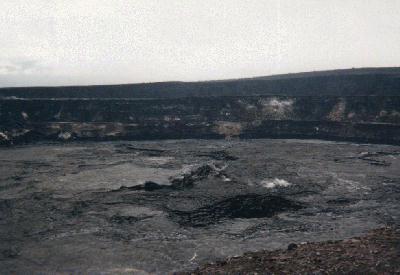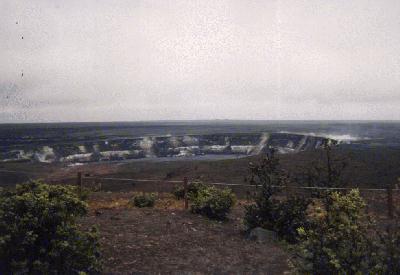

 |
|
 |
Kilauea is the most active volcano on Earth, and
one of the most intensely studied volcanoes in the world.
Kilauea is a shield volcano in the Hawaiian archipelago.
It was and is being formed by a hot spot beneath the Pacific plate. Like
other shield volcanoes, Kilauea's eruptions tend to be Hawaiian in type,
but they can get dangerous. Several violent eruptions have had pyroclastic
flows, large ashfalls, and lava bombs. Such an eruption in the eighteenth
century killed many troops of a Hawaiian ruler.
A feature from these large, explosive eruptions
is a caldera. Kilauea has a large Calderaat it's summit, and a smaller
Halemaumau. Kilauea also has several side vents, on or around rift zones.
These rift zones are to the SouthEast and SouthWest. Among the vents in
those areas are; the famous Puu Oo, Mauna Ulu, and all the craters along
chain of craters road.
Current volcanic activity began in 1983 and is the
longest volcanic eruption of Kilauea in recorded time. This present eruption
built up Pu'u O'o vent, and countless other volcanic vents.